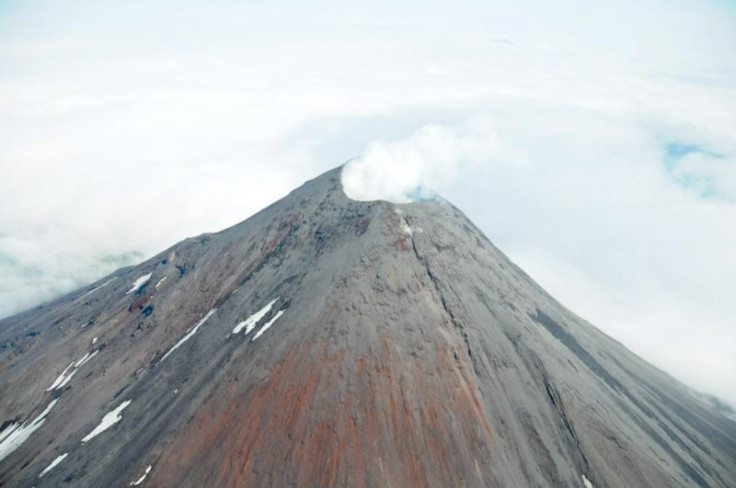Alaska’s Cleveland Volcano Erupts: Will Its Ash Cloud Disrupt Air Travel?

Scientists are monitoring the remote Cleveland Volcano in Alaska’s Aleutian Islands chain for further eruptions that could launch an ash cloud capable of wreaking havoc on intercontinental air travel.
The volatile peak came to life Saturday with three eruptions beginning at around 5 a.m. local time, according to the Alaska Volcano Observatory, or AVO, which changed the aviation color code to “Orange” from “Yellow” and raised the volcano alert level to “Watch.”
An “Orange” aviation color code means the “[v]olcano is exhibiting signs of elevated unrest above known background level or, after a change from a higher level, volcanic activity has decreased significantly but continues to be closely monitored for possible renewed increase,” per the AVO website.
On Sunday afternoon, AVO scientists reported, “The activity at Cleveland Volcano continues as an ongoing low-level eruption,”
AVO monitors Alaska’s 90 active volcanoes, and its satellite data showed continuous low-level emissions of gas, steam and minor amounts of ash from Cleveland Sunday, with a faint plume extending eastward below 15,000 feet.
“Sudden explosions of blocks and ash are possible with little or no warning,” the scientists added. “Ash clouds, if produced, could exceed 20,000 feet above sea level.”
Like other active volcanoes in the Aleutian chain, which extends southwest of the Alaskan mainland toward Russia, perfectly conical Cleveland lies directly below the commercial airline flight path between North America and Asia. Any ash cloud above 20,000 feet could cause major problems for airlines.
Some 90 percent of all airfreight from Asia to Europe and North America flies over Alaska airspace, and although a widely circulated Reuters report indicated that aviation officials had already rerouted some of that traffic north of the volcano as a precaution Sunday, a Federal Aviation Administration representative at the Alaska regional office told the International Business Times by phone Sunday evening that this report was false.
“Every indication is that no traffic has been rerouted,” the FAA rep said. “Cleveland Volcano falls along an oceanic route, and the aircraft fly very high. You are only going to divert if you’ve got an ash cloud in your direct route of traffic.”
The rep said FAA looks at each subsequent eruption as a unique event and would assess wind action and other factors before making any decisions on diverting traffic.
Dr. Jeffrey T. Freymueller of the Geophysical Institute at the University of Alaska in Fairbanks also said he hadn’t received any reports of the eruption affecting air travel.
“Unless the eruption changes character, we don’t expect there to be any impact on trans-Pacific air travel. Thus far, all of the data suggests that the ash plume is not extensive, and has remained below 15,000 to 20,000 feet elevation. As long as it remains at low elevations, airliners will not be affected.”
Because the 5,676-foot Cleveland Volcano is in a very remote area 939 miles southwest of Anchorage on the uninhabited Chunginadak Island, the human danger levels are low -- but so too are the monitoring tools. The volcano has no real-time seismic network in place, and AVO warned Sunday that it may not know about a large ash-producing event until several hours later, as it relies on satellite data, eyewitness reports and signals from a different volcano roughly 50 miles away.
Cleveland has shown signs of activity on several occasions since 2011, but the long-simmering volcano’s most significant eruption in recent times began in February 2001, when three explosive events produced ash clouds as high as 39,000 feet above sea level.
According to an American Meteorological Society paper about that eruption, volcanic ash led to a number of potentially dangerous encounters with aircraft.
“Onboard radars can only occasionally detect concentrated ash within or near eruption plumes,” the authors noted, explaining why aviation experts and scientists need to keep a close eye on volcanic eruptions. “Only total avoidance of the ash ensures flight safety.”
© Copyright IBTimes 2024. All rights reserved.






















